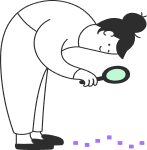Estimated reading time: 7 minutes
While it may appear contradictory, rest is crucial to your fitness journey. Wise athletes understand the role of rest in a training plan. They also know to listen to their body and take extra rest days when required. It would be impossible for Rafael Nadal to perform as though he was in a Grand Slam final every day, or for a marathon runner to push themselves and run long distances on a daily basis. Without rest days, you risk injury, fatigue, and declining performance.
Don’t lose your grocery list with a free Samsung Food Account

Of course, a training plan comprised solely of rest days will not help you get fitter. It can seem confusing; you know rest is important, but how much rest do you need to take and when? There isn’t an easy answer to this query as it’s very much on a case-by-case basis and reliant on individual differences.
If you conquer your rest conundrum, you will limit the risk of injury and fatigue while consistently building fitness.
What is meant by rest?
Rest refers to a break from your primary sport. For instance, you won’t run on a rest day if you are a runner. Or if you are a weight lifter, you won’t lift weights on a rest day.
Rest can comprise a period of no exercise, or it could involve active rest. The benefit of active rest is that it gently works the muscles, keeping them loose while aiding the recovery process.
Rest days are an excellent opportunity to participate in other activities. A cyclist may swap pedals for a yoga mat or hiking boots, or a swimmer may hop on their bike for a leisurely cycle.
The basic training principles consist of 6 steps. Overloading and stressing the body is imperative to building fitness. But for adaptations such as muscle growth to take effect in the body, rest is a part of training and is featured as a specific step in the basic training principles.
Ultimately rest allows the overloaded muscles to repair and rebuild and be in the optimum state of readiness to train again to produce optimum performance results.

When to take rest days
Rest needs are dependent on several individual factors:
- Age and ability to recover.
- Fitness level
- Fitness goals.
- External stressors.
Rest is essential to mitigate injuries. Ineffective rest puts unnecessary strain on the body, increasing the risk of injury.
If you are new to your exercise of choice, gradually building your fitness up and taking a rest day every second day is a good option. Once you have built a consistent fitness foundation over 6 – 8 weeks, you can reduce your rest days and integrate them into your fitness plan every 3 – 5 days.
For weightlifting exercises targeting specific muscle groups, you will need at least 1 – 2 days of rest before returning to the same muscle group. In the interim, you can work on other muscle groups.
Similarly, if you are a runner and want to schedule an interval workout, hill session, and a long run into a weekly training program. Consider integrating steady runs between these sessions rather than running them back to back to facilitate recovery.
Of course, these are very broad guidelines and they may or may not work for you. Getting to know your body, your fitness levels, and what works best for your routine is the only way to determine exactly when and how long you should rest for.
Nuances of rest days
Listening to your body and mind is imperative for a holistic fitness journey. If you are experiencing any signs or symptoms of burnout, taking additional rest days is imperative.
Common symptoms of burnout include:
- Change in emotional regulation, including increased irritability.
- Apathy.
- Loss of appetite.
- Insomnia.
- Headaches.
- Fatigue.
- Underperforming.
It also goes without saying that if you have any niggles or soreness, it is better to rest to avoid this erupting into a full-scale injury. Taking an extra few rest days is far better than being relegated to the injury bench for a few weeks.
Another area where rest is crucial is both before and after competition.
For instance, before a marathon, runners should increase their rest days 2 – 3 weeks before their event. This increase in rest will maximize glycogen and red blood cell levels. And to ensure adequate recovery, rest days are also increased in the week after a marathon.
The use of rest days in and around competition is essential for all sports, not just running. If you participate in any competitions, prepare to increase your rest days in the weeks before and after the big event.

Maximize the power of rest
There are a few tricks of the trade that can help maximize the benefits of rest days and optimize the body’s recovery.
It’s worth bearing in mind that the body can’t differentiate between the stress from exercise and the stress from life in general. So if life is particularly stressful, you may want to reduce the volume or intensity of your fitness regime.
In his book “The 4 Pillar Plan,” Dr. Rangan Chatterjee suggests 4 pivotal components of health. These can lend themselves to maximizing rest.
1. Eat
Be sure to eat adequately for your lifestyle. This advice means taking in enough proteins, carbohydrates, and fats to help your body repair and rebuild. Getting the right balance of protein, fat, and carbs can help you to perform well when you’re training but can also help your rest days be more effective.
On rest days, think of your food as your body’s janitor, making minor repairs to ensure everything is in working order. And don’t skimp on the vegetables! The nutrients and vitamins they offer help your body to perform all kinds of essential functions.
Dive into our content and find culinary inspiration

2. Sleep
Sleep is a magic potion for recovery. According to this study from 2016, athletes require more sleep than non-athletes. At least seven hours per night is recommended, but research also suggests this may vary between individuals.
Sleep deprivation is associated with poor athletic performance. It is both quality and quantity of sleep that is important, so making sure you have a good bedtime routine could help you make that personal best at your next event. In the future, you may benefit from reviewing your sleep hygiene and ensuring you get adequate sleep to repair and rebuild from your exercise of choice.

3. Relax
To get the most significant benefit from a rest day, it helps to minimize all life stressors. Unfortunately, you can’t just absolve yourself from work and family responsibilities, but could you indulge in a massage, meditation, or mindfulness practice?
Could you treat yourself to a massage? A massage not only helps to aid relaxation, but a 2017 study found those who received a massage within 3 days of intense exercise experienced less soreness than those who did not. Plus, it feels good and might even help you relax enough to get that great sleep we were talking about earlier!
These three suggested activities boost relaxation levels by engaging the parasympathetic nervous system. The parasympathetic nervous system is responsible for our automatic functioning; it reduces the heart rate, inhibits adrenaline production, and invites inner calm.
4. Move
Movement is where active rest comes into play. Your rest days are the perfect opportunity to stretch out tired muscles or go for that relaxing stroll or swim that you’ve been promising yourself. Gentle movement will help keep your muscles loose and free.
Wrapping up
The requirement for rest days is individual, but luckily there are several rules of thumb to help guide you.
Your fitness level and lifestyle will influence the frequency of your rest days. Remember, a wise athlete listens to their body and mind and adds additional rest days when needed.
While it may seem counterintuitive, rest is a vital part of training. Adequate rest keeps injury and illness at bay and helps your body function optimally.
Words by Ali Hall



